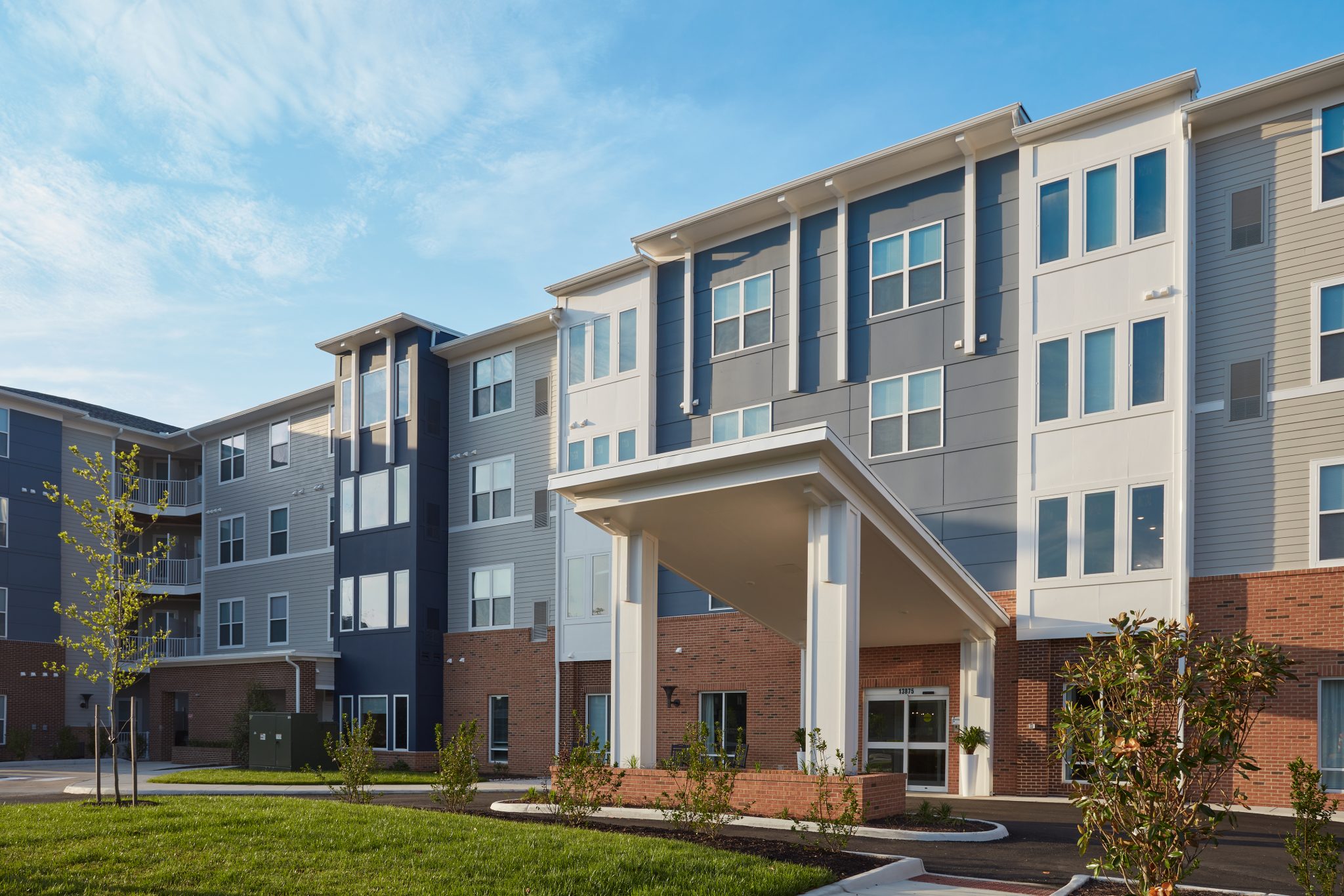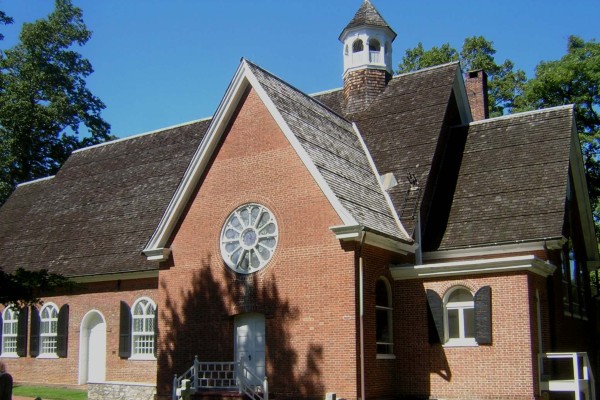Owing Mills, MD, a suburb around 20 miles away from the city of Baltimore, has an interesting place in American history. Like the name implies, Owing Mills Maryland has roots in the milling industry. It’s also named for one of its earliest settlers, Samuel Owings Jr.
Today, people visit the Baltimore Owings Mills area to immerse themselves in the beautiful nature and wildlife areas. You can also learn about Owings Mills history at places like the Hubert V. Simmons Museum of Negro Leagues Baseball Inc.
>> Read “12 Best Museums to Visit Around Baltimore, MD”
Here’s more about the history of Owings Mills and how it became the welcoming and thriving community it is today.
Explore Acclaim at Belmont Bay
History of Owings Mills, Maryland
Owings Mills, Maryland, was originally the home to Native Americans, including the Susquehannock people. In the early 1700s, pioneers first started settling in the area of Owings Mills. Among them was the Owings family, consisting of Welsh immigrants Samuel and Urath Owings. Samuel Owings Jr., their son, was born in 1733 in the Green Spring Valley in the Baltimore County area.
Owings Jr. acquired Baltimore County land and, following in his father’s footsteps, got into the mill business. Owings Jr. operated three mills in Gwynn’s Falls, also in Baltimore County. One mill produced grist, one produced plaster from limestone, and the other was used for grinding flour.
Owings Jr. also constructed a Colonial manor style home in the area in the 1760s. He named the grand brick home “Ulm,” after the Upper, Middle and Lower mills that had brought him prosperity.
Owings Jr. came to own as many as 1,775 acres in the Owings Mills area. He also became a leader in the community, acting as deputy sheriff, county commissioner, county delegate to the legislature and justice of the peace. He frequently hosted other community leaders and politicians at his home. Owings Jr. passed away in 1803.
His house, Ulm, was bulldozed in 1996. However, a replica of the Ulm house was later built in Owings Mills, with a family moving in after construction.
Railroads Come to Owings Mills
In the 18th and 19th centuries, ore mining and farming also became popular industries in the area and bolstered the area’s economy. Railroads also began to make their mark on the area. In 1832, the Baltimore & Susquehanna Railroad built an eight-mile branch from Hollins, Maryland, to Owings Mills.
The Western Maryland Railroad station also opened in the area in the 19th century, located 16 miles west of Port Covington Yard in Baltimore. At this station, the railroad began construction on what would lead to the main line to Cumberland and Hagerstorn.
In 1857, the station also began construction from Owings Mills toward Westminster. By 1873, a line from Green Spring, which is one mile east of Owings Mills, to Baltimore was completed.
Manufacturing Expands
In the early 1910s, one of Owings Mills biggest companies saw its beginnings. In 1911, the four Shapiro brothers, who were Russian immigrants, started an ice cream cone bakery firm outside of Boston. They moved their business to the Owings Mills area in 1919 and changed the name to the Maryland Baking Company. The company established a network of ice cream cone bakers in other cities and expanded its facilities in Owings Mills.
The company grew its line of products in 1957, when it started making paper cups. The company then changed its name to the Maryland Cup Company and went on to produce plastic containers and plastic plates. In the 1980s, the company’s Owing Mills presence expanded to a semi-automated, 231,000-square-foot distribution center.
In 1983, Fort Howard Paper Company acquired the Maryland Cup Company. The name then changed to Sweetheart Cup Company, Inc.
The Owings Mills plant went on to grow to 1.5 million square feet, with 13 facilities. Sweetheart Cup Company, Inc. made Owings Mills its headquarters.
In 2004, Solo Cup purchased Sweetheart Cup Company. In 2012, the Owings Mills manufacturing facility closed, ending more than 90 years of the company’s history in the area.
Owings Mills Today
In the 20th century, Owings Mills has seen continued expansion. By the mid-1970s, Owings Mills was designated as one of two new town center cites for Baltimore County. In 1980, the Owings Mills Historical Council formed to collect, maintain and share information about Owings Mills.
In 2008, CNN named Owings Mills as one of the best places in the country to launch a startup, due to its proximity to Baltimore and access to the Baltimore metro transit that connects Owings Mills to the Baltimore business district. Today, the Baltimore Ravens National Football League team calls Owings Mills its corporate office headquarters.
In 2022, more than 36,600 people called Owings Mills home. Residents and visitors explore places like:
- Hubert V. Simmons Museum of Negro Leagues Baseball, Inc., a museum with artifacts and collectibles showcasing the history of the Negro Leagues baseball league, founded by former Negro Leagues player Simmons
- Irvine Nature Center, a 211-acre property with nearly 8 miles of hiking trails and gardens, plus a butterfly center
- Soldiers Delight Natural Environment Area, comprised of 1,900 acres of serpentine barren and home to dozens of endangered plant species, insects, rocks and minerals, plus 7 miles of marked hiking trails
- St. Thomas’ Episcopal Church (pictured above), which was built in 1743 and is on the National Register of Historic Places
>> Read “15 Best Things to Do Outdoors in Owings Mills, MD”
Owings Mills is also home to diverse restaurants and shops. It’s a peaceful escape from the city of Baltimore, but close enough to head to the city in less than an hour.
Explore Acclaim at Belmont Bay

Senior Living in Owings Mills, MD
Today, Owings Mills is also home to the Senior Lifestyle community Atrium Village. Atrium Village offers Independent Living, Assisted Living, Memory Care and short-term care options for seniors and their families who are looking for safe and comfortable senior housing.
If you or a loved one are interested in a welcoming community in Maryland that’s close to Baltimore, learn more about Atrium Village and senior living options. Find out more about Senior Lifestyle, or schedule a tour today.

